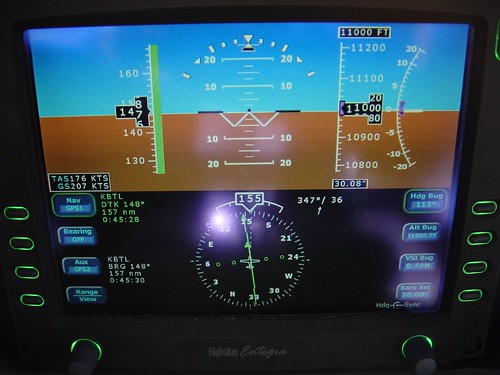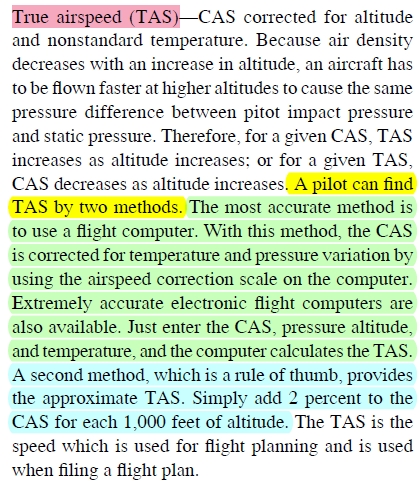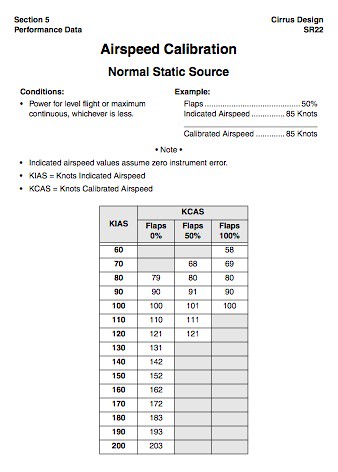If by "speed through the air" we mean how many air molecules we pass per second then the Handbook is correct.
Sorry, but that's redefining or reinterpreting it to the point of confusion.
1) Take my Cirrus panel:
The IAS is 147k. The CAS should be very close - most planes try to have IAS=CAS in the range of normal cruise regime, usually drifting off at either extreme.
But the plane's actual speed through the air (molecules notwithstanding

) is 176k. In one hour it will travel 176 nm within the mass of air that it finds itself. That is, by definition, it's TRUE airspeed.
2) There's a subtle difference between defining something and the mechanics of how to find it.
For instance, if I ask a student to define Pressure Altitude, and he or she answers, "It's what you get when you put 29.92 in as your altimeter setting", I know they're on the right track, but I would probably follow up with, "Well, that's how you determine it, but what is it exactly?" I then try to lead them to something like, "Well, it's your actual height above the level in the atmosphere where there's standard pressure", or something involving the "Standard Datum Plane" if they want to sound really smart.
Similar here - TAS is
defined as your actual speed through the air - very simple. How it relates to IAS and CAS (or even EAS) is a slightly different matter.
Anyway, I still hold the manual is wrong - and confusing.






